CBA senior economist Belinda Allen has written a nice report on this week’s dwelling approvals data from the Australian Bureau of Statistics (ABS).
Allen notes that housing supply is lagging way behind both the Albanese government’s housing targets and immigration-driven demand.
Higher interest rates, labour shortages, and elevated material costs continue to weigh on housing construction rates.
Australia is not building enough homes. Capacity constraints and a rapid increase in costs are plaguing the residential construction industry.
We are seeing the impact flow through to prices for existing homes and the rental market.
Building approvals fell by 1.9% in February to sit at just 12,520. Private sector house approvals rose by 10.7% in the month.
However, this gain was more than outweighed by a 24.9% fall in private multi-unit approvals.
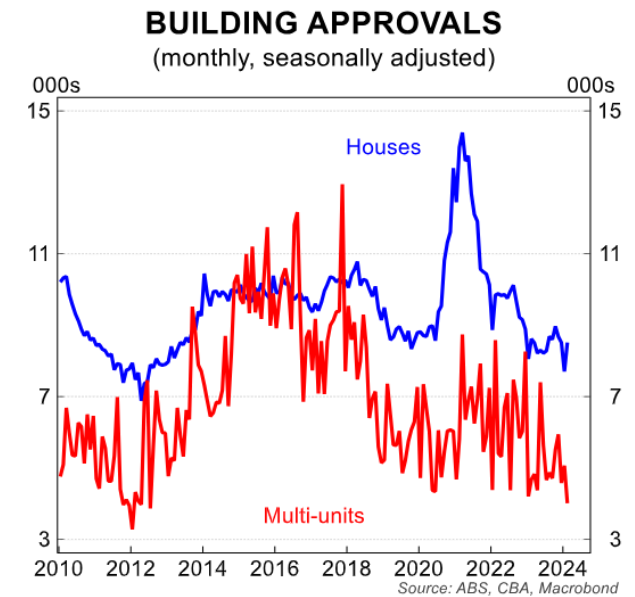
Trend-adjusted data illustrates the weakness in annual terms. Approvals for houses and multi-units are lower compared to a year earlier.
In trend terms, rolling annual approvals are at the lowest point since early 2013.
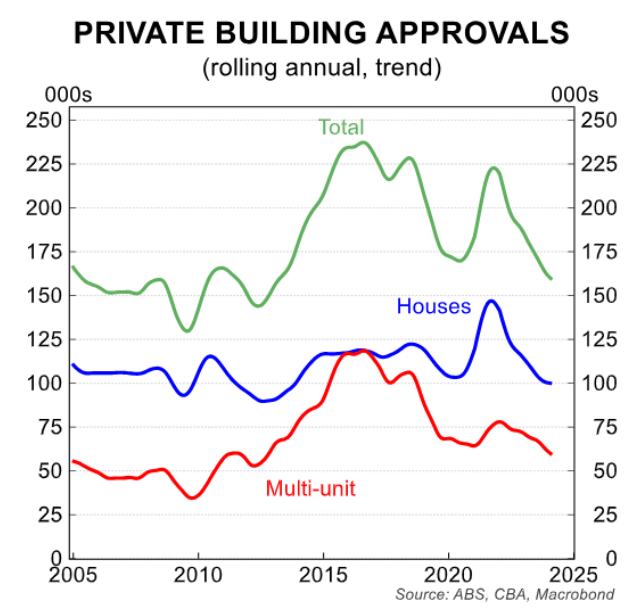
By state NSW (+23.4%) and SA (+15.4%) recorded large gains in the month. Vic (+2.1%) and WA (+0.9%) recorded modest gains while Qld recorded a large 28.5% fall.
Over the past year all states are recording lower approvals.
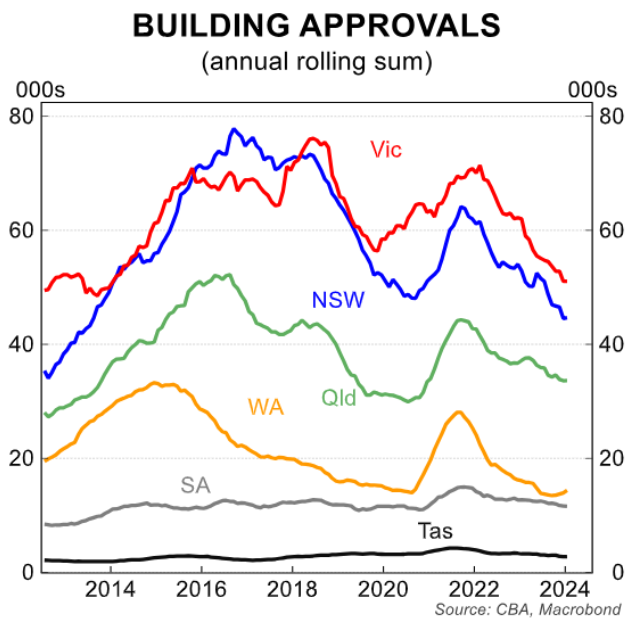
The weakness in approvals is across houses, apartments and town-houses.
Currently, ~160k homes have been approved per year, which is well below the government’s 240k annual target over the next 5 years.
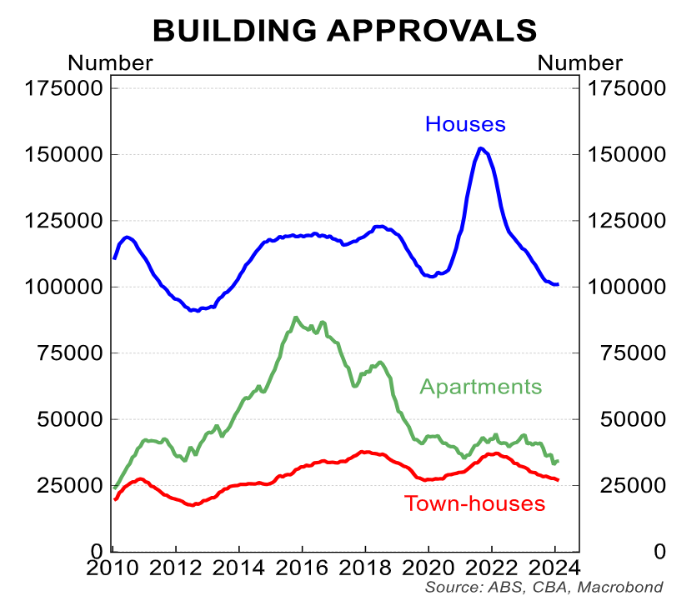
Australia is not building enough new homes to match demand.
Comparing annual building approvals per 1000 people illustrates the low level of new housing stock being approved.
The impact is coming through in higher home prices.
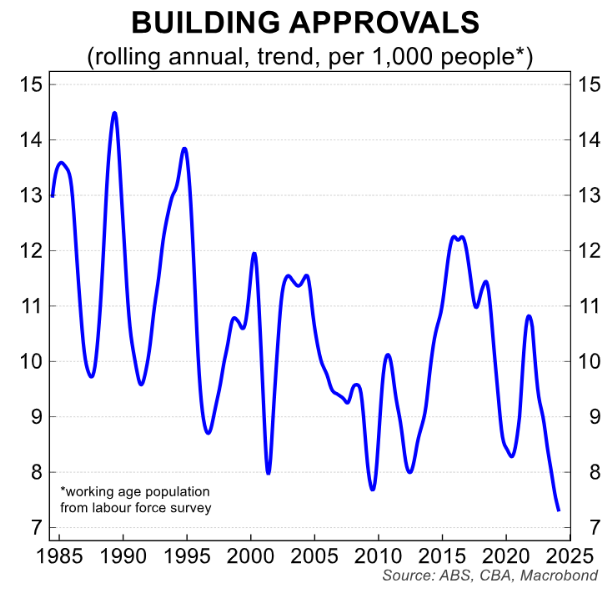
Higher interest rates are also constraining the level of building approvals.
Much of this reflects funding costs for developers and builders.
Our expectation for interest rate cuts later this year and next year should provide some support if other challenges settle.

Capacity constraints around labour and materials are well known in the construction industry, as are rising costs.
This can be seen in both PPI and CPI measurements rising ~40% over the past three years.


